
Universal pH indicator solution 1-14
$3,500.00 Original price was: $3,500.00.$3,000.00Current price is: $3,000.00.

Visking Tube 1 Metre
$1,200.00 Original price was: $1,200.00.$900.00Current price is: $900.00.
Urea 500gm
$650.00 Original price was: $650.00.$500.00Current price is: $500.00.
Whatsapp Order
Urea is an organic compound with the chemical formula CO(NH₂)₂. It is a colorless, odorless solid, highly soluble in water, and practically non-toxic. Here are some key points about urea:
Chemical Properties:
- Formula: CO(NH₂)₂
- Molecular Weight: 60.06 g/mol
- Structure: Urea consists of two amine groups (-NH₂) attached to a carbonyl group (C=O).
Production:
Urea is primarily produced via the Haber-Bosch process, which synthesizes ammonia from nitrogen and hydrogen. The ammonia is then combined with carbon dioxide to form urea: 2NH3+CO2→CO(NH2)2+H2O2 text{NH}_3 + text{CO}_2 rightarrow text{CO(NH}_2text{)}_2 + text{H}_2text{O}2NH3+CO2→CO(NH2)2+H2O
SKU:
ACS53328CHEM0
Category: Analytical Reagents
Description
Table of Contents
ToggleUses of Urea
Protein Denaturation and Renaturation:
- Protein Denaturation: Urea is often used in the process of protein denaturation. High concentrations of urea can disrupt hydrogen bonds in proteins, leading to the unfolding of their secondary and tertiary structures.
- Protein Renaturation: After denaturation, urea can be gradually removed (by dialysis or dilution), allowing the protein to refold into its native structure. This is crucial in studies of protein folding and structure.
Buffering Agent:
- Buffers: Urea can be used as a buffering agent in electrophoresis and other biochemical assays to maintain a stable pH and provide a consistent ionic environment.
Gel Electrophoresis:
- PAGE (Polyacrylamide Gel Electrophoresis): Urea is used in denaturing polyacrylamide gel electrophoresis (PAGE) to separate nucleic acids or proteins by size. The denaturing properties of urea ensure that the biomolecules are in their unfolded state, providing more accurate size-based separation.
Chemical Synthesis:
- Synthesis of Organic Compounds: Urea serves as a reactant or catalyst in various organic synthesis reactions, including the synthesis of heterocyclic compounds and the formation of urea derivatives.
Protein Crystallization:
- Crystallization Studies: Urea is used in protein crystallization experiments to help understand protein structures. It can influence the solubility and crystallization conditions of proteins.
Molecular Biology:
- RNA Folding Studies: Urea is used to denature RNA, allowing researchers to study RNA folding and structure.
- Hybridization Studies: Urea can destabilize double-stranded nucleic acids, which is useful in hybridization studies involving DNA and RNA.
Clinical Chemistry:
- Blood Urea Nitrogen (BUN) Test: Urea is used in assays to measure the concentration of urea nitrogen in the blood, which is an important indicator of kidney function.
Research on Enzymatic Reactions:
- Enzyme Activity Studies: Urea can be used to study the effects of denaturants on enzyme activity, helping to elucidate the mechanisms of enzyme action and stability.
Stabilization of Biological Samples:
- Stabilizing Proteins and Nucleic Acids: Urea is sometimes used to stabilize proteins and nucleic acids during storage and handling in the laboratory.
Reviews (0)
Be the first to review “Urea 500gm” Cancel reply
Related products
Aceto Carmine 100 ml
Aceto carmine is a staining solution used primarily in microscopy to highlight cellular components. It is a mixture of carmine dye and acetic acid. Here’s an overview of its properties, preparation, and uses:
Properties
- Color: Red to purplish-red.
- Solubility: Soluble in water and ethanol.
- Staining Characteristics: Stains chromatin and cytoplasmic components, providing contrast for better visualization under a microscope.
Preparation
- Ingredients:
- Carmine dye: A natural red dye extracted from the cochineal insect.
- Acetic acid: A colorless liquid organic compound with a pungent smell.
- Procedure:
- Dissolve a specific amount of carmine powder in hot distilled water.
- Add glacial acetic acid to the solution.
- Filter the mixture to remove any undissolved particles.
Agar Agar Powder
Agar agar powder refers to the dehydrated and powdered form of agar agar, a natural gelling agent derived from seaweed. It is made by drying and grinding the agar agar gel, resulting in a fine powder with excellent gelling properties. Agar agar powder is commonly used in cooking, baking, and food preparation as a vegetarian and vegan substitute for gelatin. It is prized for its ability to create firm and stable gels at relatively low concentrations and temperatures. Agar agar powder is versatile and can be used in a variety of recipes, including desserts, confectioneries, jams, jellies, and savory dishes.
Aluminum Carbonate 250g
Aluminum carbonate is a chemical compound with the formula Al2(CO3)3. It is a white, crystalline solid that is insoluble in water. Aluminum carbonate is not commonly encountered in pure form due to its high instability, especially in the presence of water and carbon dioxide. Instead, it tends to decompose into aluminum hydroxide and carbon dioxide when exposed to moisture or acidic conditions.
Aluminum Hydroxide 250gm
Aluminium hydroxide is a chemical compound with the formula Al(OH)3. It is an inorganic compound that is commonly used as an antacid to neutralize excess stomach acid, as well as a component in the manufacture of various products, such as ceramics, paper, and cosmetics. It is a white, powdery substance that is insoluble in water and has a low toxicity. When heated, it decomposes to produce aluminium oxide, or alumina, which is used in the production of aluminium metal.
Ammonia Solution 2.5litres
An ammonia solution is a solution of ammonia (NH3) gas dissolved in water. It is a clear, colorless liquid with a pungent odor and a basic pH. The concentration of ammonia in the solution can vary, and is typically expressed in terms of percent by weight or by volume.
Ammonia solutions are commonly used in a variety of applications, including cleaning agents, fertilizers, and as a precursor to other chemicals. They are also used in industrial processes such as refrigeration, gas purification, and water treatment. Ammonia solutions can be dangerous if not handled properly, as they are highly corrosive and can release toxic fumes if mixed with certain chemicals
Ammonium Chloride 500gm
Ammonium chloride is an inorganic compound with the chemical formula NH4Cl. It is a white crystalline salt that is highly soluble in water and has a salty taste. Ammonium chloride is often used in various industrial and laboratory applications, including as a flux in soldering, as a nitrogen source in fertilizers, and as a component in dry cell batteries. It can also be used in medicine as an expectorant to help thin and loosen mucus in the respiratory system
Ammonium Cupric Chloride
Sodium Thiosulphate 25kg
Sodium thiosulfate (Na2S2O3) is an inorganic compound that is commonly used as a photographic fixer, as well as in medical and industrial applications. It is a white crystalline powder that is soluble in water and has a mild odor. In photography, sodium thiosulfate is used to remove unexposed silver halide from photographic prints and negatives, making the image permanent. In medicine, it is used as an antidote for cyanide poisoning, and in industrial applications, it is used as a reducing agent, a dechlorinating agent, and in water treatment processes.

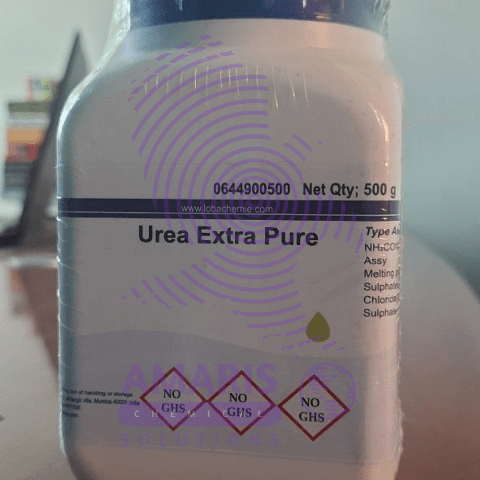

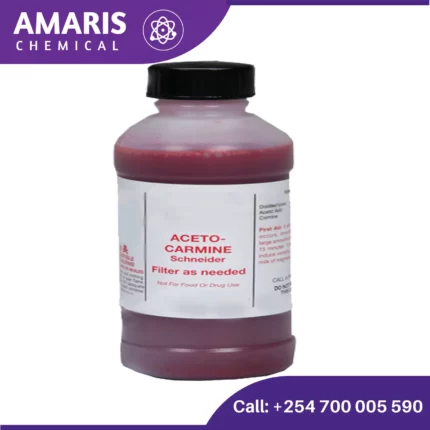

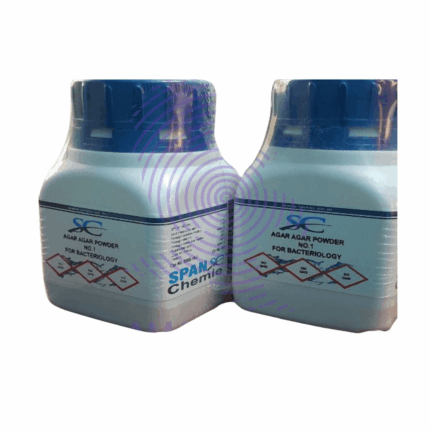
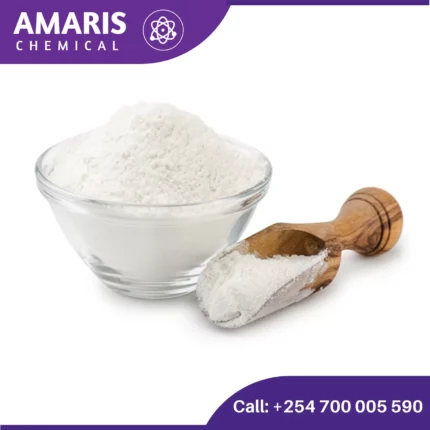
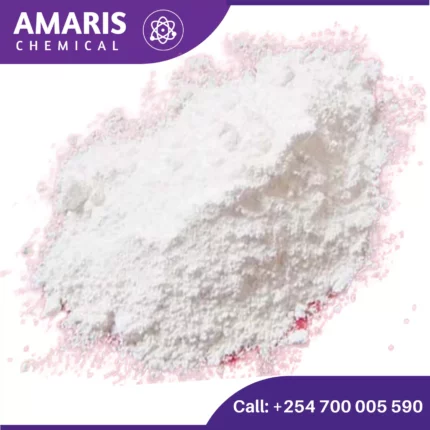
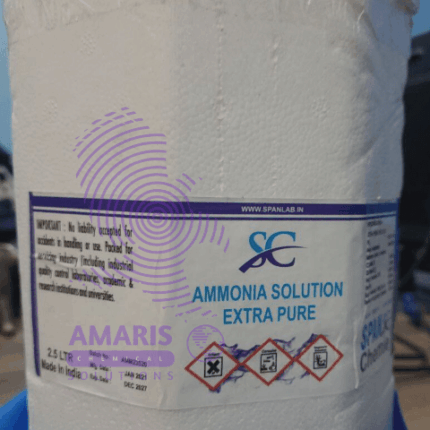



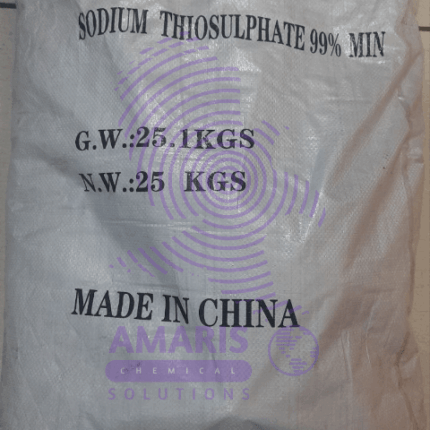
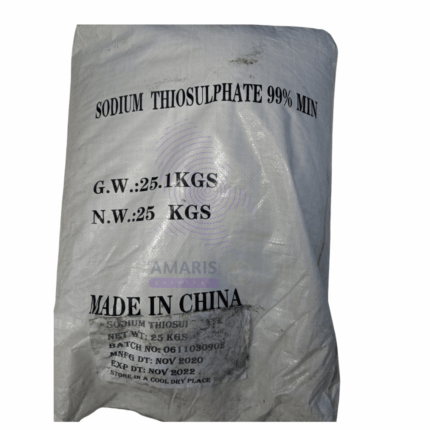













Reviews
There are no reviews yet.